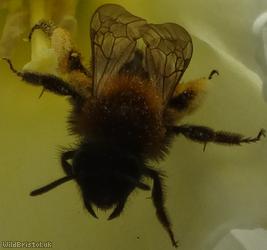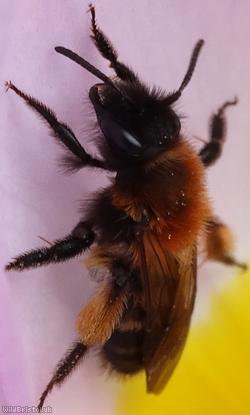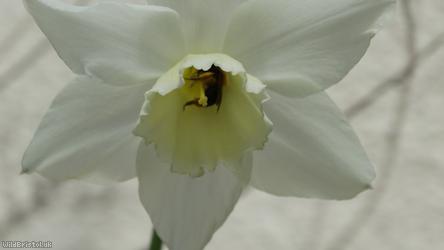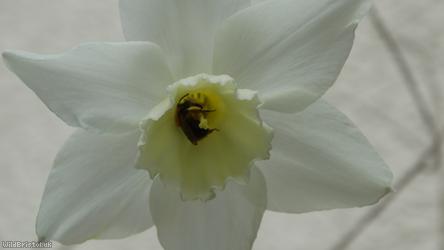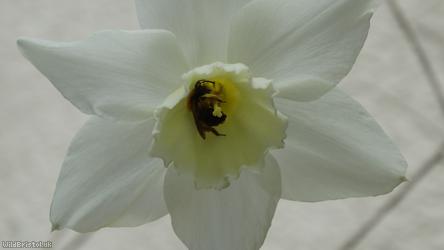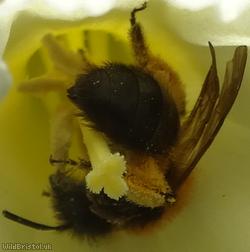Gwynne's Mining Bee - Andrena bicolor
Favourite Photos
Species Description
Widespread and fairly frequent throughout the UK but mainly in the South. Habitat includes: woodland rides/coppice's, calcareous grassland. Flight period: Two generations - March to June, June to August. Flowers known to be used: Barren Strawberry, English Bluebell, Butterbur, Buttercups, Daffodils, Daisy, Dandelion, Germander Speedwell, Common Hawthorn, Marsh Marigold, Mustards, Primrose, Willows. Ive also seen it on Grape Hyacinths, Ivy-leaved Toad Flax. The summer brood has been confirmed as foraging from Brambles, Buttercups, Cat's-ears, Cinquefoils, Crane's-bill's, Knapweed's, Lime's (tree), Meadowsweet, Mustard's, Rose's, Thistle's and Willowherb's. Life story: Nest in the ground, usually where the soil is quite soft. A small nest is constructed containing a few cells, which the female fills with pollen. A single egg is laid in each cell and the larvae feed on the pollen.
